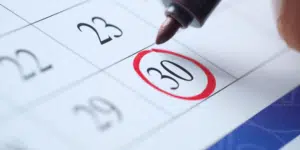Many students head off to college thinking they’re finished with science and math forever.
After suffering through physics and precalculus in high school, they’re determined to take only humanities courses going forward. Then distribution requirements come into play — and even the most hardcore humanities students often have to deal with STEM (science, technology, engineering, and math) courses at some point during their college careers.
But there’s no need to fear! STEM doesn’t have to be scary. In fact, you may develop a newfound appreciation for it as an undergrad. I have a B.A. in History and a B.S. in Computer Science, so I know what it takes to succeed in both STEM and the humanities. Here are eight tips for coping successfully with STEM — even if you think you’re “just not good at math.”
The Big Picture
1. Grades aren’t everything.
Don’t beat yourself up if your marks in a STEM class aren’t as high as the ones you’ve earned in other classes. According to Wake Forest University professor Kevin Rask, grades in STEM departments are significantly lower than those in non-STEM fields. In the school he looked at, five of the six lowest-grading departments were in science or math. Grade inflation, it seems, isn’t as common in STEM fields as it is in other majors. Adjusting your expectations will help keep you from getting discouraged if your grades take a dip in classes that aren’t necessarily in your wheelhouse. (Also, keep in mind that by virtue of being out of your comfort zone, a class is more likely to teach you content you don’t already know.)
2. Grades are relative.
A lot of STEM courses are curved — meaning that a certain percentage of the class will earn A’s, B’s, and so on. How you perform in relation to your classmates may ultimately matter more than your actual scores on assignments and tests. If that’s the case, then the professor will announce the class average on exams and assignments; always record these numbers so you have some idea of where you stand. If your math skills are really shaky, try taking a STEM class that’s geared toward humanities majors. Physics for Poets, anyone?
Handling Homework
3. Do the problems — even when you have the answers.
Many STEM textbooks include answers (and explanations) to odd-numbered questions and problems in the back of the book — hence why professors tend to assign the even-numbered ones for homework. But you shouldn’t ignore the odd problems just because they’re not assigned. These are often crucial to understanding how to apply the concepts you just read about, and they can make answering the even ones a whole lot easier. Here’s another homework tip: start assignments as early as possible, so you have time to go to the TA’s or professor’s office hours if you’re stuck.
4. Always do your best, even when excellence is optional.
In a lot of STEM classes, the teacher will say that your lowest homework grade will be dropped. While some students take this as an invitation to slack off, you should complete every assignment thoroughly so that you can apply what you learned — practice, practice, practice is the key to STEM success! Plus, you never know which assignment will be the one you’ll really need to drop.
5. Be proactive about getting help.
One thing that scares many students is that STEM classes are cumulative, meaning that each concept builds on the one before it. So if you don’t understand something, it’s crucial to get help as soon as possible. Go to your professor’s office hours, join a study group, or see if your school offers free tutoring. Talking to your professors is also key; if you’re in between grades at the end of the semester, they’re more likely to round up if they can match a name to a face.
Taking STEM Tests
6. Write down your formulas ASAP.
What’s the first thing you should do when taking a STEM test? Write down all the formulas you’ve memorized on top of the exam or on scrap paper, while they’re still fresh in your brain, so you don’t have to worry about blanking out in the middle of the test. It’s like having a cheat sheet without cheating!
7. Apply lessons learned long ago.
Remember the maxims you learned in grade-school math? They may sound obvious, but many college students seem to have forgotten about them: Always show your work so you can get partial credit. Always include units to avoid confusion. And always double- or even triple-check your work, because careless mistakes are the bane of the STEM student’s existence.
8. Resolve to re-solve.
The best way to prepare for a STEM test is to re-work all the problems you did in class, for homework, and on practice tests. Don’t just look them over — work them out as if you were seeing them for the first time. Active studying is much more effective than reading something over and over again. It also pays to be extremely familiar with these problems, as you’ll rarely get a test question unlike one you’ve seen before.
A Final Word
Remember that college is a time for exploration. You’re cheating yourself if you don’t take a class that interests you because you hated math in high school or you think it might lower your average. With a little planning and the right attitude, you, too, can conquer STEM!







